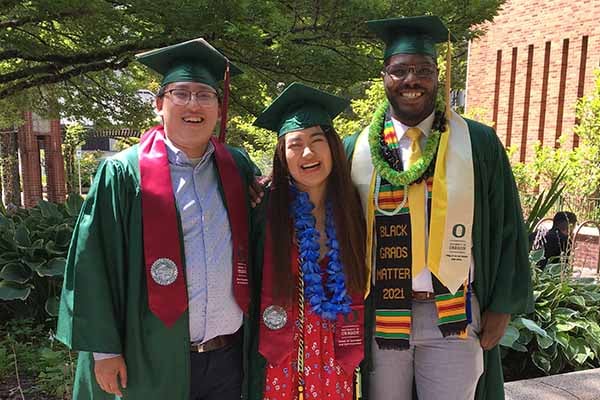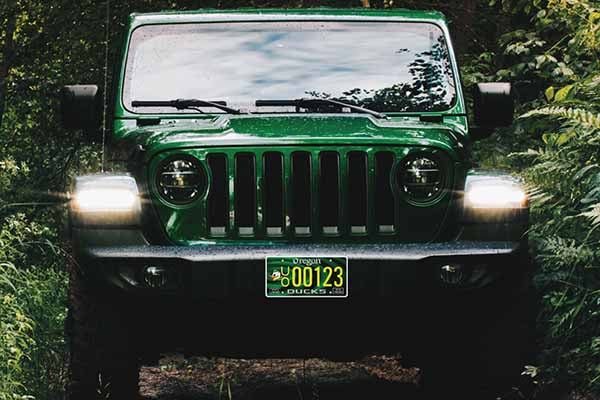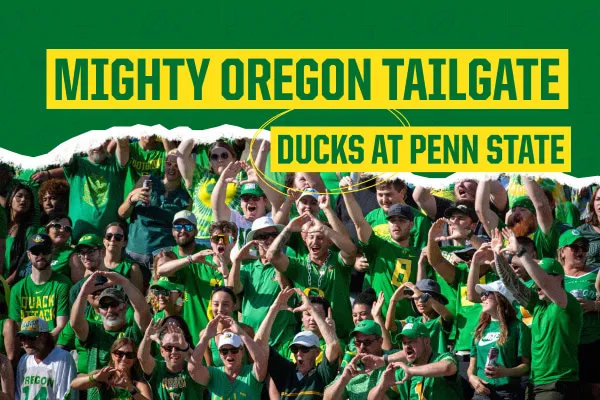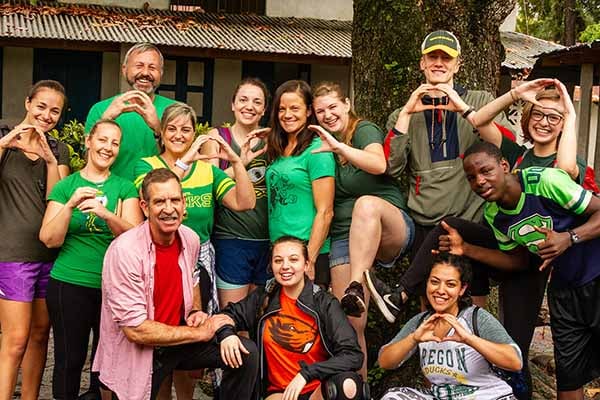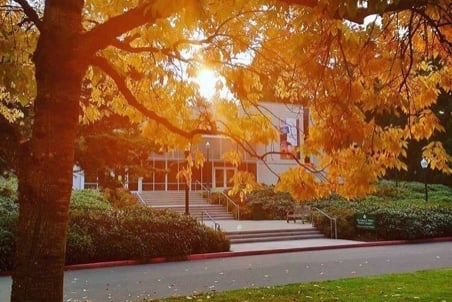Duck Territory: The University of Oregon through a pinhole

One of Paul W. Harvey IV’s favorite photos is of the Duck Store. “It takes me back to that point in time, early in Covid times, when I made it. And it’s a bit eerie too.”
Leaves rustling on the ground. Century-old buildings hidden behind a grove of trees. Shadows. Empty and forgotten places. For photographer Paul Harvey these things have an often unexpected and overlooked beauty.
His latest photography collection is Anas Terram: the University of Oregon through a pinhole. Anas Terram is Latin for Duck Territory. Looking at his photos, you would think that he spends hours hiking lone trails looking for the “the perfect shot,” but surprisingly, Harvey is a cataloger and metadata technician with UO Libraries, by trade—and a sports photographer. He specifically works with cataloging maps and sports photography with Collections services.
“I absolutely love maps, so being able to work with them, especially old or specialized maps of Oregon is a thrill,” Harvey says. “I have planned vacations based on what I was cataloging at times, and I have brought back maps from those trips to donate to the library. So, then I get to relive my trips as I catalog those maps.”
He describes managing the UO Athletics Sports History Digital Collection as a “labor of lust.” Harvey’s father, Paul W. Harvey III, BA ‘59, (political science) was a sports reporter for years in Eugene, so as he writes descriptions of pictures, Harvey feels like he’s channeling his inner sports reporter.
“Covering Duck sports has also brought me into contact with reporters and photographers who worked with my dad, back when they were first starting out in journalism,” Harvey says. “And, let’s be honest, I get to cover some pretty top-notch athletes from enviable vantage points.”

Former UO basketball player Sabrina Ionescu (#21) smiling as she watches head coach Kelly Graves admiring the PAC-12 tournament championship trophy after the Ducks defeated Stanford 77-57 on March 4, 2018 at Key Arena in Seattle. Photo Credit: Paul W. Harvey IV
Although Harvey graduated in 1992 with a major in Russian, he recalls that he has always taken photos. In the early 1980s, he picked up his first 35mm camera as a Sergeant in the Army, stationed in northern Greece. He says that photography became a real passion in the mid-1990s when he began coaching bowling, softball, and basketball for Special Olympics in Eugene.
“I began taking pictures at practices and competitions,” Harvey says. “A bunch of Ducks athletes came to one of our bowling practices as part of the O Heroes program. They just came to hang out and bowl with my Special Olympians, who are probably the most loyal Ducks fans. Period. The lacrosse team and the tennis teams were heavily represented, and I promised I would come watch them compete and cheer them on.”
Harvey took his camera to a lacrosse game and began contributing his own photography to the UO Athletics collection. Over the years he began to cover athletics events: football, basketball, rugby, baseball, soccer, and all of the other sports that the UO offers. He recently added his 25,000th picture to the collection—all of which are cataloged.
His work with the UO collection, led to him to being selected as a lead photographer at the Special Olympics 2018 USA National Games in Seattle. He, along with his wife Susie who is a photographer as well, were both invited again to cover the USA National Games in 2022, this time in Orlando, Florida.

Harvey with the Tennessee bowling team at the USA National Games in Seattle in 2018. Harvey is in front with Special Olympian Nathan, who he coached at the 2011 World Games in Greece. Photo Credit: Paul W. Harvey IV
While most photos that Harvey takes are of sports, he says that his focus began to change when he was in Eastern Oregon and stumbled across ghost towns. The idea of making pinhole images, or lens-less photos, came to him. The technique was the opposite of sports photography with its 10 frames per second—and instead of being on the court or the field, Harvey taught himself pinhole photography in the Memorial Quad. For Harvey, campus is his “photographic techniques laboratory.”
Using 4x5" sheet film, primarily black and white, which he develops in his kitchen sink, Harvey has made more than 1000 large-format negatives of Oregon’s ghost towns, covered bridges, lighthouses, grange buildings—including almost 200 of the University of Oregon.
“With my film work, especially my photography without a lens, I want to say, ‘slow down.’ I like to invite the viewer to see things differently. Maybe it will cause someone to pull over and read the historical markers along the way or get out of their car and walk across the covered bridge and to fall as deeply and as passionately in love with Oregon as I have,” Harvey says.



